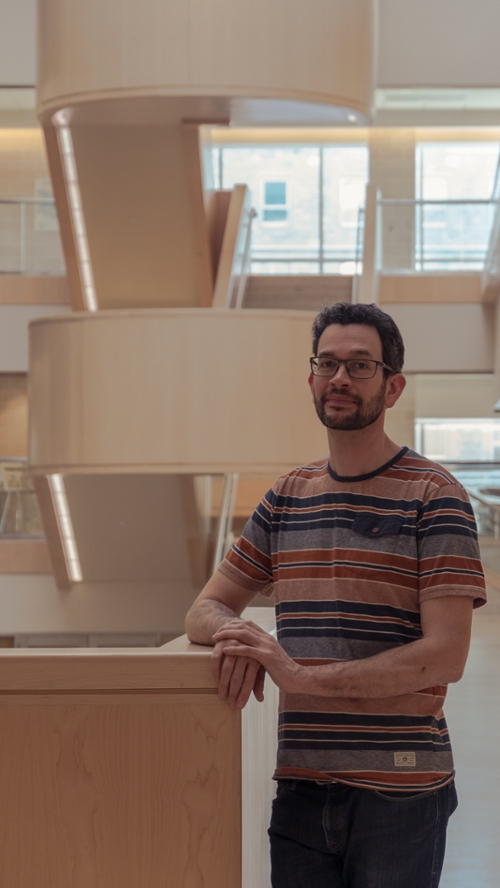
Above All, Be Curious
The John Howland lab (JHL) focuses on behavioral neuroscience research and is located in the Department of Anatomy, Physiology, and Pharmacology in the Health Science’s building. Howland and his students pursue a range of projects from understanding the effects of acute stress on cognition and synaptic plasticity to neurodevelopmental models of severe psychiatric illness in rodent models.
The John Howland lab (JHL) focuses on behavioral neuroscience research and is located in the Department of Anatomy, Physiology, and Pharmacology in the Health Science’s building. Howland and his students pursue a range of projects from understanding the effects of acute stress on cognition and synaptic plasticity to neurodevelopmental models of severe psychiatric illness in rodent models.
To be a good undergraduate researcher you need to “Listen to orders!” -- Howland jokes before adding that, in actuality, to be good researchers students ought to be “smart, meticulous, attentive, and engaged.” Howland also stresses that “students just need to be genuinely curious and then given the opportunity to act on that curiosity.” With JHL summer students, they sample different projects until they find something they are interested in and want to keep working on. Once they discover their interest, students take ownership of their piece of the project, “In my lab, students are given an umbrella topic with flexibility for their own research questions.” However, it’s worth noting that undergraduates don’t work in isolation but are often paired with graduate student mentors. “So really,” Howland specifies, “they are given monitored independence.”
Mentoring undergraduates has made Howland more aware of different approaches to learning-by-doing, “some students are more independent and others need more instruction, and this has nothing to do with ability.” Some undergraduates can take on “higher-risk projects”, experiences that allow undergraduates the opportunity to “dream a little”. Howland seeks to “to give students a lot of room to be creative. For example, we might have a brainstorming session or I might ask them to build a structure for the rats. In that case, we would go to a do-it-yourself store and pick up some supplies. Once the student builds the structure and puts the rats inside, they might realize that they would have built something differently or that the size is out of scale for the rats. Students really get to engage in being creative and work through the trial and error process this way.”
If you want to get involved in a lab such as the JHL, send the P.I. an email, but not just any email. Howland says, “I get lots of nice, friendly emails…but the more detailed ones show that a student is really interested in my work.” He adds, “Our research papers are now easily accessible online, and so is my lab website. If a student’s email shows clear, detailed interest specific to my work… they are the ones that get noticed.” Howland emphasizes to students to be up-front about what motivates their interest in research whether they plan on a research career or getting into a professional school. What’s vital for Howland about knowing students’ goals is that it may factor into the type of project he gives them. Howland says, “If you’re interested in continuing with research you might have more of what I call a dreamer project, where you really get to explore and be creative, whereas if you’re planning to leave sooner, a project that is less broad might make more sense.”
For Howland, the most rewarding aspect of offering undergraduate research experiences is seeing students grow and change. When a student first connects with JHL, they may only be in their second or third year and may not know exactly what they want to be doing in the future. Howland says, “Watching undergraduates figure that uncertainty out and navigate that process, and eventually go on to achieve success has been really great.” Along with knowing that “research involves long, tiring hours, so if you don’t find it enjoyable and you are not interested in what you are studying, it may not be a great experience” Howland emphasizes to undergraduates to “make sure to follow your gut, fiddle around a bit, and explore what is out there.”
Brain Bee
Howland also assists the Saskatchewan Neuroscience Network with running the Annual Saskatchewan Brain Bee where high school students are asked questions related to the brain. The winner ultimately competes with others from across Canada for the CIHR Canadian National Brain Bee championship. This opportunity may be a great way to start getting involved in research as a high school or university student.

